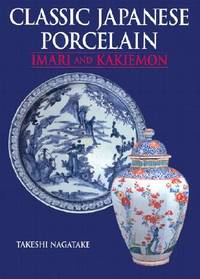
Foto de archivo: la portada puede ser diferente
Classic Japanese Porcelain: Imari and Kakiemon Tapa dura - 2003
de Takeshi Nagatake
Primera línea
Compared with the pottery of other Japanese kilns, Ko Imari ware-literally "Old Imari", or Imari ware produced during the seventeenth and eighteenth centuries-is uniquely colorful, vigorous and varied.
Detalles
- Título Classic Japanese Porcelain: Imari and Kakiemon
- Autor Takeshi Nagatake
- Encuadernación Tapa dura
- Edición First Thus
- Páginas 95
- Volúmenes 1
- Idioma ENG
- Editorial Kodansha, Japan
- Fecha de publicación September 9, 2003
- Ilustrado Sí
- ISBN 9784770029522 / 4770029527
- Peso 1.34 libras (0.61 kg)
- Dimensiones 7.6 x 10.3 x 0.5 pulgadas (19.30 x 26.16 x 1.27 cm)
- Dewey Decimal Code 738.209
Más ejemplares

Classic Japanese Porcelain: Imari and Kakiemon
de Nagatake, Takeshi
- Usado
- Tapa dura
- First
- Estado
- Usado
- Edición
- First Edition
- Encuadernación
- Hardcover
- ISBN 10 / ISBN 13
- 9784770029522 / 4770029527
- Cantidad disponible
- 1
- Librería
-
Eureka, California, United States
- Precio
-
EUR 146.83EUR 4.70 enviando a USA
Mostrar detalles
Descripción:
Kodansha International, 2003. First Edition. Hardcover. Fine. 94 pages. 7-3/4 by 10-1/2 inches. Previously published separately as Kakiemon (1981) and Imari (1982). Illustrated with a 40-page section of color photo reproductions. First combined edition (first printing). A fine copy in a fine dust jacket. Japan has long had a thriving tradition of high-quality handcrafted ceramics, including some of the world's most sophisticated porcelains. This highly informative volume written by a leading authority describes the origin and development of the elegant Imari and Kakiemon porcelain wares which were in great demand in Europe in the seventeenth and eighteenth centuries. Kaolin was discovered in the Arita area of Kyushu in the early seventeenth century. The first porcelain wares were made by immigrant Korean potters, from whom Japanese potters were quick to learn new potting techniques and cobalt blue underglaze decoration. Local wares were further enriched by enamel overglaze techniques introduced…
Leer más Precio
EUR 146.83
EUR 4.70
enviando a USA
